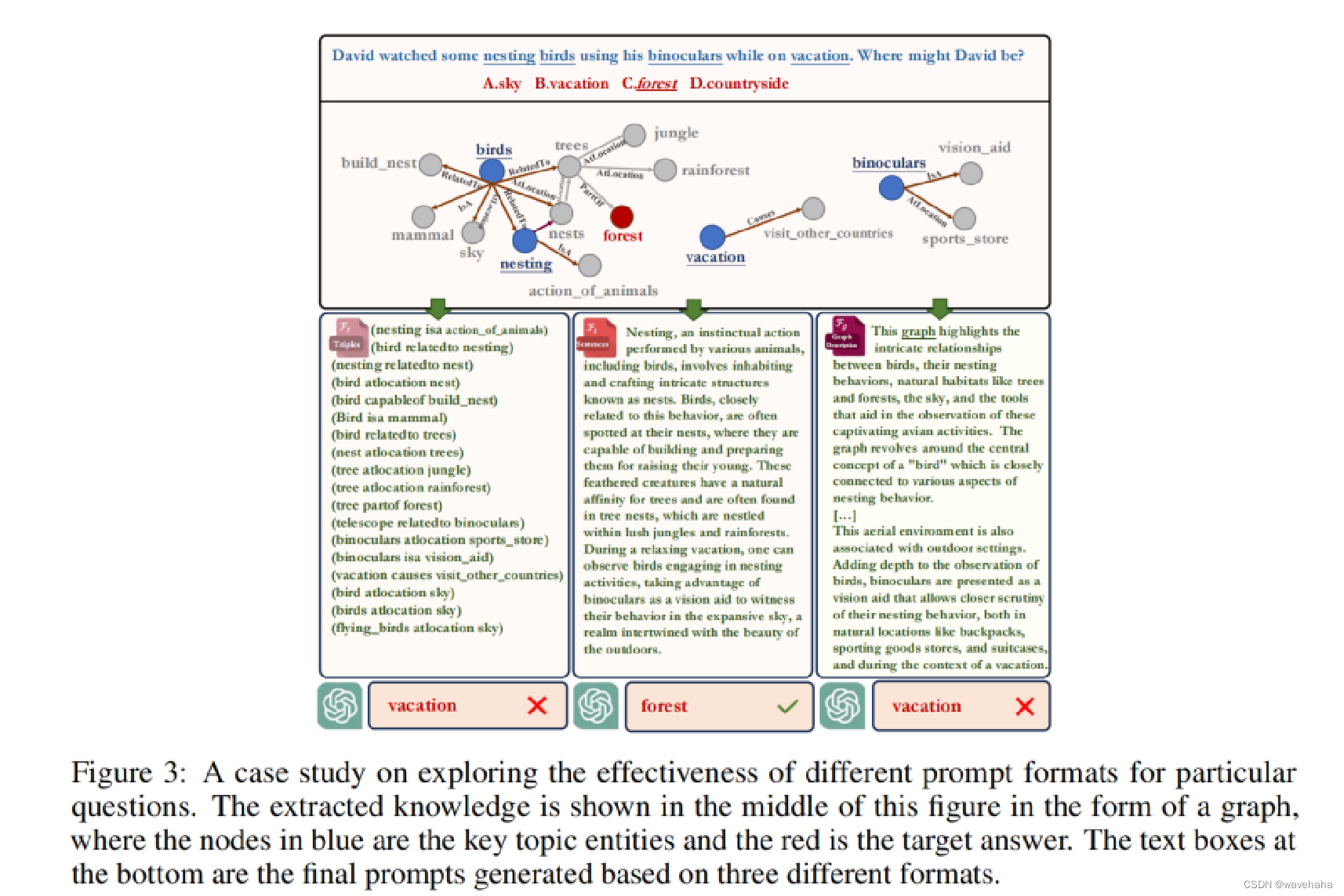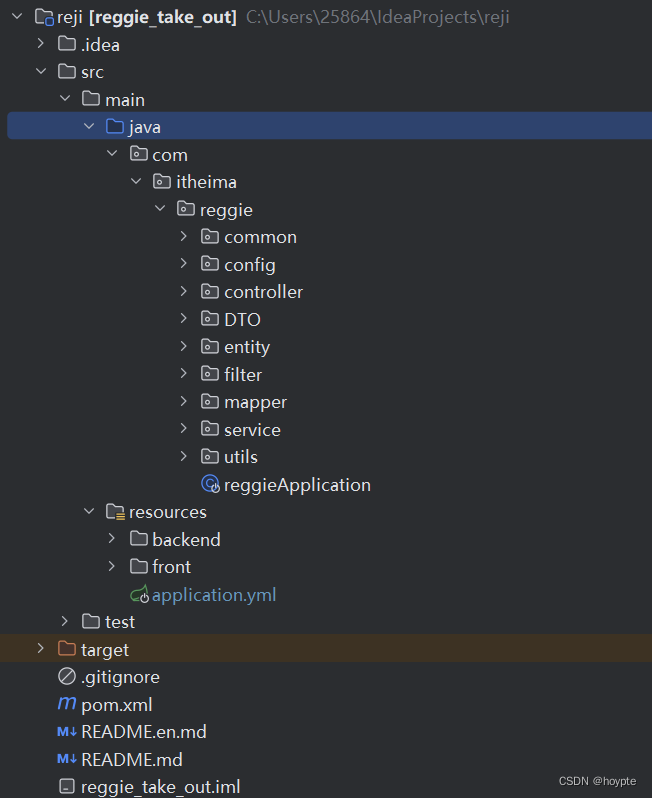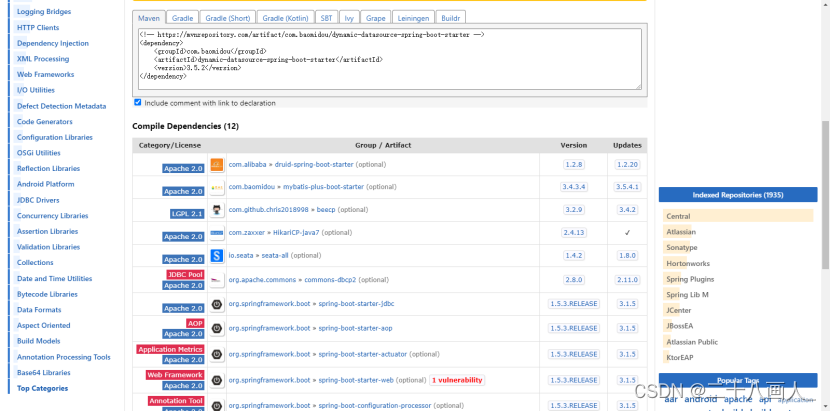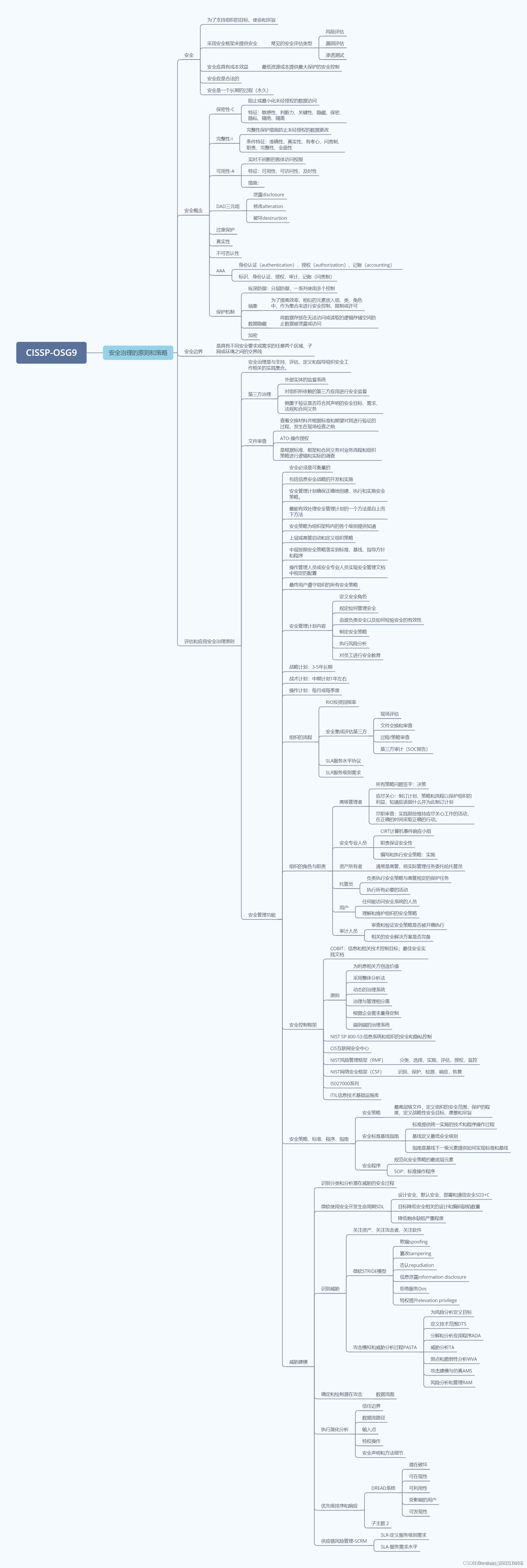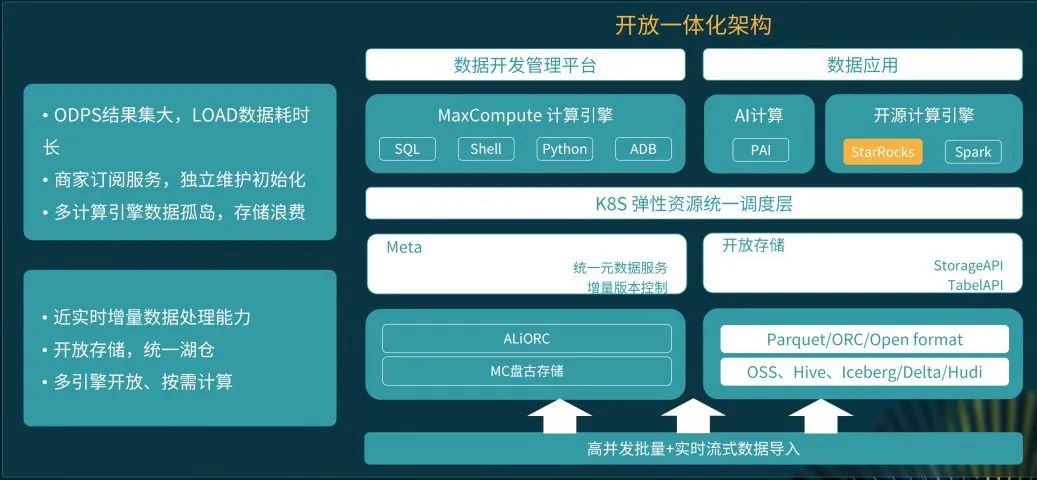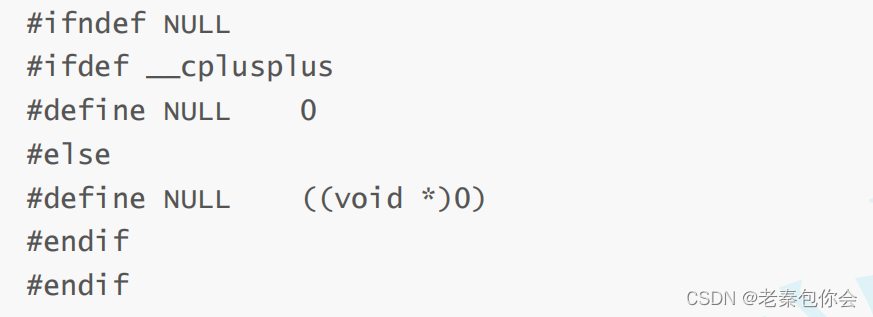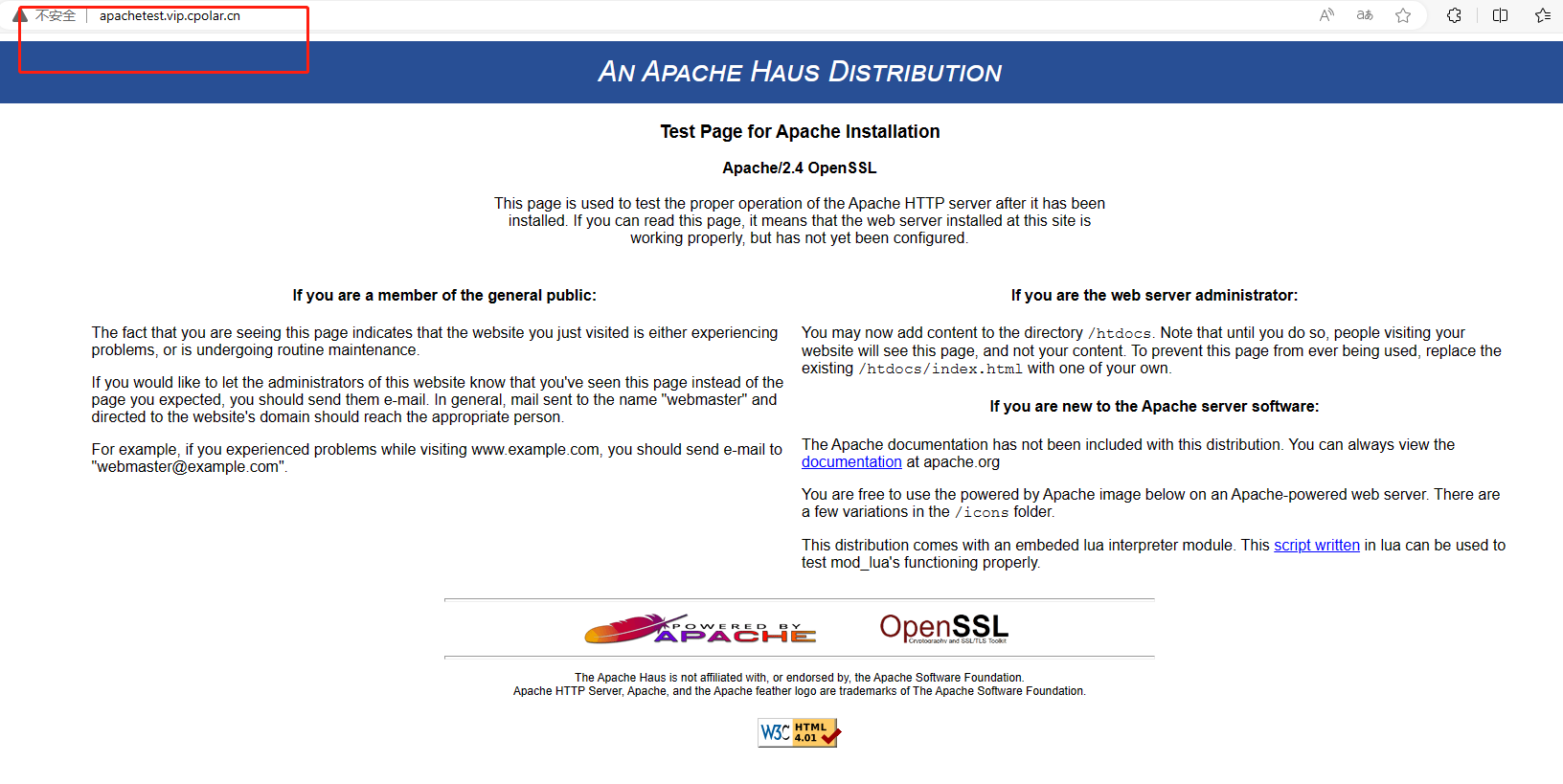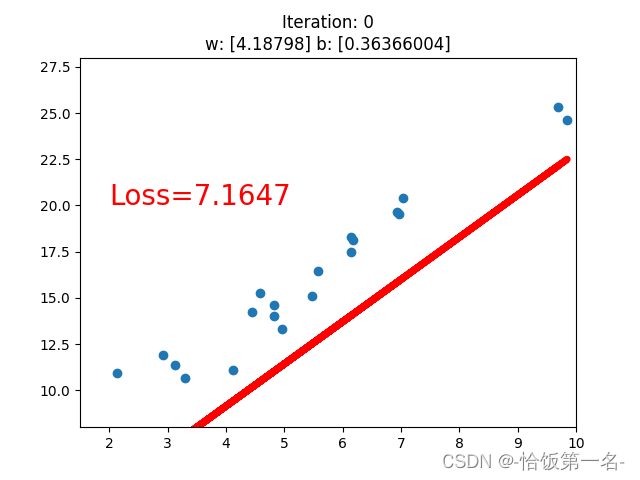带着疑问学源码,第七篇:Elasticsearch 分片恢复分析
代码分析基于:https://github.com/jiankunking/elasticsearch
Elasticsearch 8.0.0-SNAPSHOT
目的
在看源码之前先梳理一下,自己对于分片恢复的疑问点:
- 网上对于ElasticSearch分片恢复的逻辑说法一抓一把,网上说的对不对?新版本中有没有更新?
- 在分片恢复的时候,如果收到Api _forcemerge请求,这时候,会如何处理?(因为副本恢复的第一节点是复制segment文件)
- 这部分等看/_forcemerge api的时候,再解答一下。
- 分片恢复的第二阶段是同步translog,这一步会不会加锁?不加锁的话,如何确保是同步完成了?
如果说看源码有捷径的话,那么找到网上一篇写的比较权威的源码分析文章跟着看,那不失为一种好方法。
下面源码分析部分将参考腾讯云的:Elasticsearch 底层系列之分片恢复解析,一边参考,一边印证。
源码分析
目标节点请求恢复
先找到分片恢复的入口:IndicesClusterStateService.createOrUpdateShards
在这里会判断本地节点是否在routingNodes中,如果在,说明本地节点有分片创建或更新的需求,否则跳过。
private void createOrUpdateShards(final ClusterState state) {// 节点到索引分片的映射关系,主要用于分片分配、均衡决策// 具体的内容可以看下:https://jiankunking.com/elasticsearch-cluster-state.htmlRoutingNode localRoutingNode = state.getRoutingNodes().node(state.nodes().getLocalNodeId());if (localRoutingNode == null) {return;}DiscoveryNodes nodes = state.nodes();RoutingTable routingTable = state.routingTable();for (final ShardRouting shardRouting : localRoutingNode) {ShardId shardId = shardRouting.shardId();// failedShardsCache:https://github.com/jiankunking/elasticsearch/blob/master/server/src/main/java/org/elasticsearch/indices/cluster/IndicesClusterStateService.java#L116// 恢复过程中失败的碎片列表;我们跟踪这些碎片,以防止在每次集群状态更新时重复恢复这些碎片if (failedShardsCache.containsKey(shardId) == false) {AllocatedIndex<? extends Shard> indexService = indicesService.indexService(shardId.getIndex());assert indexService != null : "index " + shardId.getIndex() + " should have been created by createIndices";Shard shard = indexService.getShardOrNull(shardId.id());if (shard == null) { // shard不存在则需创建assert shardRouting.initializing() : shardRouting + " should have been removed by failMissingShards";createShard(nodes, routingTable, shardRouting, state);} else { // 存在则更新updateShard(nodes, shardRouting, shard, routingTable, state);}}}}
副本分片恢复走的是createShard分支,在该方法中,首先获取shardRouting的类型,如果恢复类型为PEER,说明该分片需要从远端获取,则需要找到源节点,然后调用IndicesService.createShard:
RecoverySource的Type有以下几种:
EMPTY_STORE,
EXISTING_STORE,//主分片本地恢复
PEER,//副分片从远处主分片恢复
SNAPSHOT,//从快照恢复
LOCAL_SHARDS//从本节点其它分片恢复(shrink时)
createShard代码如下:
private void createShard(DiscoveryNodes nodes, RoutingTable routingTable, ShardRouting shardRouting, ClusterState state) {assert shardRouting.initializing() : "only allow shard creation for initializing shard but was " + shardRouting;DiscoveryNode sourceNode = null;// 如果恢复方式是peer,则会找到shard所在的源节点进行恢复if (shardRouting.recoverySource().getType() == Type.PEER) {sourceNode = findSourceNodeForPeerRecovery(logger, routingTable, nodes, shardRouting);if (sourceNode == null) {logger.trace("ignoring initializing shard {} - no source node can be found.", shardRouting.shardId());return;}}try {final long primaryTerm = state.metadata().index(shardRouting.index()).primaryTerm(shardRouting.id());logger.debug("{} creating shard with primary term [{}]", shardRouting.shardId(), primaryTerm);indicesService.createShard(shardRouting,recoveryTargetService,new RecoveryListener(shardRouting, primaryTerm),repositoriesService,failedShardHandler,this::updateGlobalCheckpointForShard,retentionLeaseSyncer,nodes.getLocalNode(),sourceNode);} catch (Exception e) {failAndRemoveShard(shardRouting, true, "failed to create shard", e, state);}}/*** Finds the routing source node for peer recovery, return null if its not found. Note, this method expects the shard* routing to *require* peer recovery, use {@link ShardRouting#recoverySource()} to check if its needed or not.*/private static DiscoveryNode findSourceNodeForPeerRecovery(Logger logger, RoutingTable routingTable, DiscoveryNodes nodes,ShardRouting shardRouting) {DiscoveryNode sourceNode = null;if (!shardRouting.primary()) {ShardRouting primary = routingTable.shardRoutingTable(shardRouting.shardId()).primaryShard();// only recover from started primary, if we can't find one, we will do it next roundif (primary.active()) {// 找到primary shard所在节点sourceNode = nodes.get(primary.currentNodeId());if (sourceNode == null) {logger.trace("can't find replica source node because primary shard {} is assigned to an unknown node.", primary);}} else {logger.trace("can't find replica source node because primary shard {} is not active.", primary);}} else if (shardRouting.relocatingNodeId() != null) {// 找到搬迁的源节点sourceNode = nodes.get(shardRouting.relocatingNodeId());if (sourceNode == null) {logger.trace("can't find relocation source node for shard {} because it is assigned to an unknown node [{}].",shardRouting.shardId(), shardRouting.relocatingNodeId());}} else {throw new IllegalStateException("trying to find source node for peer recovery when routing state means no peer recovery: " +shardRouting);}return sourceNode;}
源节点的确定分两种情况,如果当前shard本身不是primary shard,则源节点为primary shard所在节点,否则,如果当前shard正在搬迁中(从其他节点搬迁到本节点),则源节点为数据搬迁的源头节点。得到源节点后调用IndicesService.createShard,在该方法中调用方法IndexShard.startRecovery开始恢复。
public void startRecovery(RecoveryState recoveryState, PeerRecoveryTargetService recoveryTargetService,PeerRecoveryTargetService.RecoveryListener recoveryListener, RepositoriesService repositoriesService,Consumer<MappingMetadata> mappingUpdateConsumer,IndicesService indicesService) {// TODO: Create a proper object to encapsulate the recovery context// all of the current methods here follow a pattern of:// resolve context which isn't really dependent on the local shards and then async// call some external method with this pointer.// with a proper recovery context object we can simply change this to:// startRecovery(RecoveryState recoveryState, ShardRecoverySource source ) {// markAsRecovery("from " + source.getShortDescription(), recoveryState);// threadPool.generic().execute() {// onFailure () { listener.failure() };// doRun() {// if (source.recover(this)) {// recoveryListener.onRecoveryDone(recoveryState);// }// }// }}// }assert recoveryState.getRecoverySource().equals(shardRouting.recoverySource());switch (recoveryState.getRecoverySource().getType()) {case EMPTY_STORE:case EXISTING_STORE:executeRecovery("from store", recoveryState, recoveryListener, this::recoverFromStore);break;case PEER:try {markAsRecovering("from " + recoveryState.getSourceNode(), recoveryState);recoveryTargetService.startRecovery(this, recoveryState.getSourceNode(), recoveryListener);} catch (Exception e) {failShard("corrupted preexisting index", e);recoveryListener.onRecoveryFailure(recoveryState,new RecoveryFailedException(recoveryState, null, e), true);}break;case SNAPSHOT:final String repo = ((SnapshotRecoverySource) recoveryState.getRecoverySource()).snapshot().getRepository();executeRecovery("from snapshot",recoveryState, recoveryListener, l -> restoreFromRepository(repositoriesService.repository(repo), l));break;case LOCAL_SHARDS:final IndexMetadata indexMetadata = indexSettings().getIndexMetadata();final Index resizeSourceIndex = indexMetadata.getResizeSourceIndex();final List<IndexShard> startedShards = new ArrayList<>();final IndexService sourceIndexService = indicesService.indexService(resizeSourceIndex);final Set<ShardId> requiredShards;final int numShards;if (sourceIndexService != null) {requiredShards = IndexMetadata.selectRecoverFromShards(shardId().id(),sourceIndexService.getMetadata(), indexMetadata.getNumberOfShards());for (IndexShard shard : sourceIndexService) {if (shard.state() == IndexShardState.STARTED && requiredShards.contains(shard.shardId())) {startedShards.add(shard);}}numShards = requiredShards.size();} else {numShards = -1;requiredShards = Collections.emptySet();}if (numShards == startedShards.size()) {assert requiredShards.isEmpty() == false;executeRecovery("from local shards", recoveryState, recoveryListener,l -> recoverFromLocalShards(mappingUpdateConsumer,startedShards.stream().filter((s) -> requiredShards.contains(s.shardId())).collect(Collectors.toList()), l));} else {final RuntimeException e;if (numShards == -1) {e = new IndexNotFoundException(resizeSourceIndex);} else {e = new IllegalStateException("not all required shards of index " + resizeSourceIndex+ " are started yet, expected " + numShards + " found " + startedShards.size() + " can't recover shard "+ shardId());}throw e;}break;default:throw new IllegalArgumentException("Unknown recovery source " + recoveryState.getRecoverySource());}}
对于恢复类型为PEER的任务,恢复动作的真正执行者为PeerRecoveryTargetService.doRecovery。在该方法中,首先调用getStartRecoveryRequest获取shard的metadataSnapshot,该结构中包含shard的段信息,如syncid、checksum、doc数等,然后封装为StartRecoveryRequest,通过RPC发送到源节点:
private void doRecovery(final long recoveryId, final StartRecoveryRequest preExistingRequest) {final String actionName;final TransportRequest requestToSend;final StartRecoveryRequest startRequest;final RecoveryState.Timer timer;try (RecoveryRef recoveryRef = onGoingRecoveries.getRecovery(recoveryId)) {if (recoveryRef == null) {logger.trace("not running recovery with id [{}] - can not find it (probably finished)", recoveryId);return;}final RecoveryTarget recoveryTarget = recoveryRef.target();timer = recoveryTarget.state().getTimer();if (preExistingRequest == null) {try {final IndexShard indexShard = recoveryTarget.indexShard();indexShard.preRecovery();assert recoveryTarget.sourceNode() != null : "can not do a recovery without a source node";logger.trace("{} preparing shard for peer recovery", recoveryTarget.shardId());indexShard.prepareForIndexRecovery();final long startingSeqNo = indexShard.recoverLocallyUpToGlobalCheckpoint();assert startingSeqNo == UNASSIGNED_SEQ_NO || recoveryTarget.state().getStage() == RecoveryState.Stage.TRANSLOG :"unexpected recovery stage [" + recoveryTarget.state().getStage() + "] starting seqno [ " + startingSeqNo + "]";// 构造recovery request startRequest = getStartRecoveryRequest(logger, clusterService.localNode(), recoveryTarget, startingSeqNo);requestToSend = startRequest;actionName = PeerRecoverySourceService.Actions.START_RECOVERY;} catch (final Exception e) {// this will be logged as warning later on...logger.trace("unexpected error while preparing shard for peer recovery, failing recovery", e);onGoingRecoveries.failRecovery(recoveryId,new RecoveryFailedException(recoveryTarget.state(), "failed to prepare shard for recovery", e), true);return;}logger.trace("{} starting recovery from {}", startRequest.shardId(), startRequest.sourceNode());} else {startRequest = preExistingRequest;requestToSend = new ReestablishRecoveryRequest(recoveryId, startRequest.shardId(), startRequest.targetAllocationId());actionName = PeerRecoverySourceService.Actions.REESTABLISH_RECOVERY;logger.trace("{} reestablishing recovery from {}", startRequest.shardId(), startRequest.sourceNode());}}// 向源节点发送请求,请求恢复transportService.sendRequest(startRequest.sourceNode(), actionName, requestToSend,new RecoveryResponseHandler(startRequest, timer));}/*** Prepare the start recovery request.** @param logger the logger* @param localNode the local node of the recovery target* @param recoveryTarget the target of the recovery* @param startingSeqNo a sequence number that an operation-based peer recovery can start with.* This is the first operation after the local checkpoint of the safe commit if exists.* @return a start recovery request*/public static StartRecoveryRequest getStartRecoveryRequest(Logger logger, DiscoveryNode localNode,RecoveryTarget recoveryTarget, long startingSeqNo) {final StartRecoveryRequest request;logger.trace("{} collecting local files for [{}]", recoveryTarget.shardId(), recoveryTarget.sourceNode());Store.MetadataSnapshot metadataSnapshot;try {metadataSnapshot = recoveryTarget.indexShard().snapshotStoreMetadata();// Make sure that the current translog is consistent with the Lucene index; otherwise, we have to throw away the Lucene index.try {final String expectedTranslogUUID = metadataSnapshot.getCommitUserData().get(Translog.TRANSLOG_UUID_KEY);final long globalCheckpoint = Translog.readGlobalCheckpoint(recoveryTarget.translogLocation(), expectedTranslogUUID);assert globalCheckpoint + 1 >= startingSeqNo : "invalid startingSeqNo " + startingSeqNo + " >= " + globalCheckpoint;} catch (IOException | TranslogCorruptedException e) {logger.warn(new ParameterizedMessage("error while reading global checkpoint from translog, " +"resetting the starting sequence number from {} to unassigned and recovering as if there are none", startingSeqNo), e);metadataSnapshot = Store.MetadataSnapshot.EMPTY;startingSeqNo = UNASSIGNED_SEQ_NO;}} catch (final org.apache.lucene.index.IndexNotFoundException e) {// happens on an empty folder. no need to logassert startingSeqNo == UNASSIGNED_SEQ_NO : startingSeqNo;logger.trace("{} shard folder empty, recovering all files", recoveryTarget);metadataSnapshot = Store.MetadataSnapshot.EMPTY;} catch (final IOException e) {if (startingSeqNo != UNASSIGNED_SEQ_NO) {logger.warn(new ParameterizedMessage("error while listing local files, resetting the starting sequence number from {} " +"to unassigned and recovering as if there are none", startingSeqNo), e);startingSeqNo = UNASSIGNED_SEQ_NO;} else {logger.warn("error while listing local files, recovering as if there are none", e);}metadataSnapshot = Store.MetadataSnapshot.EMPTY;}logger.trace("{} local file count [{}]", recoveryTarget.shardId(), metadataSnapshot.size());request = new StartRecoveryRequest(recoveryTarget.shardId(),recoveryTarget.indexShard().routingEntry().allocationId().getId(),recoveryTarget.sourceNode(),localNode,metadataSnapshot,recoveryTarget.state().getPrimary(),recoveryTarget.recoveryId(),startingSeqNo);return request;}
注意,请求的发送是异步的。
源节点处理恢复请求
源节点接收到请求后会调用恢复的入口函数PeerRecoverySourceService.messageReceived#recover:
class StartRecoveryTransportRequestHandler implements TransportRequestHandler<StartRecoveryRequest> {@Overridepublic void messageReceived(final StartRecoveryRequest request, final TransportChannel channel, Task task) throws Exception {recover(request, new ChannelActionListener<>(channel, Actions.START_RECOVERY, request));}}
recover方法根据request得到shard并构造RecoverySourceHandler对象,然后调用handler.recoverToTarget进入恢复的执行体:
private void recover(StartRecoveryRequest request, ActionListener<RecoveryResponse> listener) {final IndexService indexService = indicesService.indexServiceSafe(request.shardId().getIndex());final IndexShard shard = indexService.getShard(request.shardId().id());final ShardRouting routingEntry = shard.routingEntry();if (routingEntry.primary() == false || routingEntry.active() == false) {throw new DelayRecoveryException("source shard [" + routingEntry + "] is not an active primary");}if (request.isPrimaryRelocation() && (routingEntry.relocating() == false ||routingEntry.relocatingNodeId().equals(request.targetNode().getId()) == false)) {logger.debug("delaying recovery of {} as source shard is not marked yet as relocating to {}",request.shardId(), request.targetNode());throw new DelayRecoveryException("source shard is not marked yet as relocating to [" + request.targetNode() + "]");}RecoverySourceHandler handler = ongoingRecoveries.addNewRecovery(request, shard);logger.trace("[{}][{}] starting recovery to {}", request.shardId().getIndex().getName(), request.shardId().id(),request.targetNode());handler.recoverToTarget(ActionListener.runAfter(listener, () -> ongoingRecoveries.remove(shard, handler)));}/*** performs the recovery from the local engine to the target*/public void recoverToTarget(ActionListener<RecoveryResponse> listener) {addListener(listener);final Closeable releaseResources = () -> IOUtils.close(resources);try {cancellableThreads.setOnCancel((reason, beforeCancelEx) -> {final RuntimeException e;if (shard.state() == IndexShardState.CLOSED) { // check if the shard got closed on use = new IndexShardClosedException(shard.shardId(), "shard is closed and recovery was canceled reason [" + reason + "]");} else {e = new CancellableThreads.ExecutionCancelledException("recovery was canceled reason [" + reason + "]");}if (beforeCancelEx != null) {e.addSuppressed(beforeCancelEx);}IOUtils.closeWhileHandlingException(releaseResources, () -> future.onFailure(e));throw e;});final Consumer<Exception> onFailure = e -> {assert Transports.assertNotTransportThread(RecoverySourceHandler.this + "[onFailure]");IOUtils.closeWhileHandlingException(releaseResources, () -> future.onFailure(e));};final SetOnce<RetentionLease> retentionLeaseRef = new SetOnce<>();runUnderPrimaryPermit(() -> {final IndexShardRoutingTable routingTable = shard.getReplicationGroup().getRoutingTable();ShardRouting targetShardRouting = routingTable.getByAllocationId(request.targetAllocationId());if (targetShardRouting == null) {logger.debug("delaying recovery of {} as it is not listed as assigned to target node {}", request.shardId(),request.targetNode());throw new DelayRecoveryException("source node does not have the shard listed in its state as allocated on the node");}assert targetShardRouting.initializing() : "expected recovery target to be initializing but was " + targetShardRouting;retentionLeaseRef.set(shard.getRetentionLeases().get(ReplicationTracker.getPeerRecoveryRetentionLeaseId(targetShardRouting)));}, shardId + " validating recovery target ["+ request.targetAllocationId() + "] registered ",shard, cancellableThreads, logger);// 获取一个保留锁,使得translog不被清理final Closeable retentionLock = shard.acquireHistoryRetentionLock();resources.add(retentionLock);final long startingSeqNo;// 判断是否可以从SequenceNumber恢复// 除了异常检测和版本号检测,主要在shard.hasCompleteHistoryOperations()方法中判断请求的序列号是否小于主分片节点的localCheckpoint,// 以及translog中的数据是否足以恢复(有可能因为translog数据太大或者过期删除而无法恢复)final boolean isSequenceNumberBasedRecovery= request.startingSeqNo() != SequenceNumbers.UNASSIGNED_SEQ_NO&& isTargetSameHistory()&& shard.hasCompleteHistoryOperations("peer-recovery", request.startingSeqNo())&& ((retentionLeaseRef.get() == null && shard.useRetentionLeasesInPeerRecovery() == false) ||(retentionLeaseRef.get() != null && retentionLeaseRef.get().retainingSequenceNumber() <= request.startingSeqNo()));// NB check hasCompleteHistoryOperations when computing isSequenceNumberBasedRecovery, even if there is a retention lease,// because when doing a rolling upgrade from earlier than 7.4 we may create some leases that are initially unsatisfied. It's// possible there are other cases where we cannot satisfy all leases, because that's not a property we currently expect to hold.// Also it's pretty cheap when soft deletes are enabled, and it'd be a disaster if we tried a sequence-number-based recovery// without having a complete history.if (isSequenceNumberBasedRecovery && retentionLeaseRef.get() != null) {// all the history we need is retained by an existing retention lease, so we do not need a separate retention lockretentionLock.close();logger.trace("history is retained by {}", retentionLeaseRef.get());} else {// all the history we need is retained by the retention lock, obtained before calling shard.hasCompleteHistoryOperations()// and before acquiring the safe commit we'll be using, so we can be certain that all operations after the safe commit's// local checkpoint will be retained for the duration of this recovery.logger.trace("history is retained by retention lock");}final StepListener<SendFileResult> sendFileStep = new StepListener<>();final StepListener<TimeValue> prepareEngineStep = new StepListener<>();final StepListener<SendSnapshotResult> sendSnapshotStep = new StepListener<>();final StepListener<Void> finalizeStep = new StepListener<>();// 若可以基于序列号进行恢复,则获取开始的序列号if (isSequenceNumberBasedRecovery) {// 如果基于SequenceNumber恢复,则startingSeqNo取值为恢复请求中的序列号,// 从请求的序列号开始快照translog。否则取值为0,快照完整的translog。logger.trace("performing sequence numbers based recovery. starting at [{}]", request.startingSeqNo());// 获取开始序列号startingSeqNo = request.startingSeqNo();if (retentionLeaseRef.get() == null) {createRetentionLease(startingSeqNo, sendFileStep.map(ignored -> SendFileResult.EMPTY));} else {// 发送的文件设置为空sendFileStep.onResponse(SendFileResult.EMPTY);}} else {final Engine.IndexCommitRef safeCommitRef;try {// Releasing a safe commit can access some commit files.safeCommitRef = acquireSafeCommit(shard);resources.add(safeCommitRef);} catch (final Exception e) {throw new RecoveryEngineException(shard.shardId(), 1, "snapshot failed", e);}// Try and copy enough operations to the recovering peer so that if it is promoted to primary then it has a chance of being// able to recover other replicas using operations-based recoveries. If we are not using retention leases then we// conservatively copy all available operations. If we are using retention leases then "enough operations" is just the// operations from the local checkpoint of the safe commit onwards, because when using soft deletes the safe commit retains// at least as much history as anything else. The safe commit will often contain all the history retained by the current set// of retention leases, but this is not guaranteed: an earlier peer recovery from a different primary might have created a// retention lease for some history that this primary already discarded, since we discard history when the global checkpoint// advances and not when creating a new safe commit. In any case this is a best-effort thing since future recoveries can// always fall back to file-based ones, and only really presents a problem if this primary fails before things have settled// down.startingSeqNo = Long.parseLong(safeCommitRef.getIndexCommit().getUserData().get(SequenceNumbers.LOCAL_CHECKPOINT_KEY)) + 1L;logger.trace("performing file-based recovery followed by history replay starting at [{}]", startingSeqNo);try {final int estimateNumOps = estimateNumberOfHistoryOperations(startingSeqNo);final Releasable releaseStore = acquireStore(shard.store());resources.add(releaseStore);sendFileStep.whenComplete(r -> IOUtils.close(safeCommitRef, releaseStore), e -> {try {IOUtils.close(safeCommitRef, releaseStore);} catch (final IOException ex) {logger.warn("releasing snapshot caused exception", ex);}});final StepListener<ReplicationResponse> deleteRetentionLeaseStep = new StepListener<>();runUnderPrimaryPermit(() -> {try {// If the target previously had a copy of this shard then a file-based recovery might move its global// checkpoint backwards. We must therefore remove any existing retention lease so that we can create a// new one later on in the recovery.shard.removePeerRecoveryRetentionLease(request.targetNode().getId(),new ThreadedActionListener<>(logger, shard.getThreadPool(), ThreadPool.Names.GENERIC,deleteRetentionLeaseStep, false));} catch (RetentionLeaseNotFoundException e) {logger.debug("no peer-recovery retention lease for " + request.targetAllocationId());deleteRetentionLeaseStep.onResponse(null);}}, shardId + " removing retention lease for [" + request.targetAllocationId() + "]",shard, cancellableThreads, logger);// 第一阶段deleteRetentionLeaseStep.whenComplete(ignored -> {assert Transports.assertNotTransportThread(RecoverySourceHandler.this + "[phase1]");phase1(safeCommitRef.getIndexCommit(), startingSeqNo, () -> estimateNumOps, sendFileStep);}, onFailure);} catch (final Exception e) {throw new RecoveryEngineException(shard.shardId(), 1, "sendFileStep failed", e);}}assert startingSeqNo >= 0 : "startingSeqNo must be non negative. got: " + startingSeqNo;sendFileStep.whenComplete(r -> {assert Transports.assertNotTransportThread(RecoverySourceHandler.this + "[prepareTargetForTranslog]");// 等待phase1执行完毕,主分片节点通知副分片节点启动此分片的Engine:prepareTargetForTranslog // 该方法会阻塞处理,直到分片 Engine 启动完毕。// 待副分片启动Engine 完毕,就可以正常接收写请求了。// 注意,此时phase2尚未开始,此分片的恢复流程尚未结束。// 等待当前操作处理完成后,以startingSeqNo为起始点,对translog做快照,开始执行phase2:// For a sequence based recovery, the target can keep its local translogprepareTargetForTranslog(estimateNumberOfHistoryOperations(startingSeqNo), prepareEngineStep);}, onFailure);prepareEngineStep.whenComplete(prepareEngineTime -> {assert Transports.assertNotTransportThread(RecoverySourceHandler.this + "[phase2]");/** add shard to replication group (shard will receive replication requests from this point on) now that engine is open.* This means that any document indexed into the primary after this will be replicated to this replica as well* make sure to do this before sampling the max sequence number in the next step, to ensure that we send* all documents up to maxSeqNo in phase2.*/runUnderPrimaryPermit(() -> shard.initiateTracking(request.targetAllocationId()),shardId + " initiating tracking of " + request.targetAllocationId(), shard, cancellableThreads, logger);final long endingSeqNo = shard.seqNoStats().getMaxSeqNo();logger.trace("snapshot for recovery; current size is [{}]", estimateNumberOfHistoryOperations(startingSeqNo));final Translog.Snapshot phase2Snapshot = shard.newChangesSnapshot("peer-recovery", startingSeqNo, Long.MAX_VALUE, false);resources.add(phase2Snapshot);retentionLock.close();// we have to capture the max_seen_auto_id_timestamp and the max_seq_no_of_updates to make sure that these values// are at least as high as the corresponding values on the primary when any of these operations were executed on it.final long maxSeenAutoIdTimestamp = shard.getMaxSeenAutoIdTimestamp();final long maxSeqNoOfUpdatesOrDeletes = shard.getMaxSeqNoOfUpdatesOrDeletes();final RetentionLeases retentionLeases = shard.getRetentionLeases();final long mappingVersionOnPrimary = shard.indexSettings().getIndexMetadata().getMappingVersion();// 第二阶段,发送translogphase2(startingSeqNo, endingSeqNo, phase2Snapshot, maxSeenAutoIdTimestamp, maxSeqNoOfUpdatesOrDeletes,retentionLeases, mappingVersionOnPrimary, sendSnapshotStep);}, onFailure);// Recovery target can trim all operations >= startingSeqNo as we have sent all these operations in the phase 2final long trimAboveSeqNo = startingSeqNo - 1;sendSnapshotStep.whenComplete(r -> finalizeRecovery(r.targetLocalCheckpoint, trimAboveSeqNo, finalizeStep), onFailure);finalizeStep.whenComplete(r -> {final long phase1ThrottlingWaitTime = 0L; // TODO: return the actual throttle timefinal SendSnapshotResult sendSnapshotResult = sendSnapshotStep.result();final SendFileResult sendFileResult = sendFileStep.result();final RecoveryResponse response = new RecoveryResponse(sendFileResult.phase1FileNames, sendFileResult.phase1FileSizes,sendFileResult.phase1ExistingFileNames, sendFileResult.phase1ExistingFileSizes, sendFileResult.totalSize,sendFileResult.existingTotalSize, sendFileResult.took.millis(), phase1ThrottlingWaitTime,prepareEngineStep.result().millis(), sendSnapshotResult.sentOperations, sendSnapshotResult.tookTime.millis());try {future.onResponse(response);} finally {IOUtils.close(resources);}}, onFailure);} catch (Exception e) {IOUtils.closeWhileHandlingException(releaseResources, () -> future.onFailure(e));}}/*** Checks if we have a completed history of operations since the given starting seqno (inclusive).* This method should be called after acquiring the retention lock; See {@link #acquireHistoryRetentionLock()}*/public boolean hasCompleteHistoryOperations(String reason, long startingSeqNo) {return getEngine().hasCompleteOperationHistory(reason, startingSeqNo);}从上面的代码可以看出,恢复主要分两个阶段,第一阶段恢复segment文件,第二阶段发送translog。这里有个关键的地方,在恢复前,首先需要获取translogView及segment snapshot,translogView的作用是保证当前时间点到恢复结束时间段的translog不被删除,segment snapshot的作用是保证当前时间点之前的segment文件不被删除。接下来看看两阶段恢复的具体执行逻辑。phase1:
/*** Perform phase1 of the recovery operations. Once this {@link IndexCommit}* snapshot has been performed no commit operations (files being fsync'd)* are effectively allowed on this index until all recovery phases are done* <p>* Phase1 examines the segment files on the target node and copies over the* segments that are missing. Only segments that have the same size and* checksum can be reused*/void phase1(IndexCommit snapshot, long startingSeqNo, IntSupplier translogOps, ActionListener<SendFileResult> listener) {cancellableThreads.checkForCancel();//拿到shard的存储信息final Store store = shard.store();try {StopWatch stopWatch = new StopWatch().start();final Store.MetadataSnapshot recoverySourceMetadata;try {// 拿到snapshot的metadatarecoverySourceMetadata = store.getMetadata(snapshot);} catch (CorruptIndexException | IndexFormatTooOldException | IndexFormatTooNewException ex) {shard.failShard("recovery", ex);throw ex;}for (String name : snapshot.getFileNames()) {final StoreFileMetadata md = recoverySourceMetadata.get(name);if (md == null) {logger.info("Snapshot differs from actual index for file: {} meta: {}", name, recoverySourceMetadata.asMap());throw new CorruptIndexException("Snapshot differs from actual index - maybe index was removed metadata has " +recoverySourceMetadata.asMap().size() + " files", name);}}// 如果syncid相等,再继续比较下文档数,如果都相同则不用恢复if (canSkipPhase1(recoverySourceMetadata, request.metadataSnapshot()) == false) {final List<String> phase1FileNames = new ArrayList<>();final List<Long> phase1FileSizes = new ArrayList<>();final List<String> phase1ExistingFileNames = new ArrayList<>();final List<Long> phase1ExistingFileSizes = new ArrayList<>();// Total size of segment files that are recoveredlong totalSizeInBytes = 0;// Total size of segment files that were able to be re-usedlong existingTotalSizeInBytes = 0;// Generate a "diff" of all the identical, different, and missing// segment files on the target node, using the existing files on// the source node// 找出target和source有差别的segment// https://github.com/jiankunking/elasticsearch/blob/master/server/src/main/java/org/elasticsearch/index/store/Store.java#L971final Store.RecoveryDiff diff = recoverySourceMetadata.recoveryDiff(request.metadataSnapshot());for (StoreFileMetadata md : diff.identical) {phase1ExistingFileNames.add(md.name());phase1ExistingFileSizes.add(md.length());existingTotalSizeInBytes += md.length();if (logger.isTraceEnabled()) {logger.trace("recovery [phase1]: not recovering [{}], exist in local store and has checksum [{}]," +" size [{}]", md.name(), md.checksum(), md.length());}totalSizeInBytes += md.length();}List<StoreFileMetadata> phase1Files = new ArrayList<>(diff.different.size() + diff.missing.size());phase1Files.addAll(diff.different);phase1Files.addAll(diff.missing);for (StoreFileMetadata md : phase1Files) {if (request.metadataSnapshot().asMap().containsKey(md.name())) {logger.trace("recovery [phase1]: recovering [{}], exists in local store, but is different: remote [{}], local [{}]",md.name(), request.metadataSnapshot().asMap().get(md.name()), md);} else {logger.trace("recovery [phase1]: recovering [{}], does not exist in remote", md.name());}phase1FileNames.add(md.name());phase1FileSizes.add(md.length());totalSizeInBytes += md.length();}logger.trace("recovery [phase1]: recovering_files [{}] with total_size [{}], reusing_files [{}] with total_size [{}]",phase1FileNames.size(), new ByteSizeValue(totalSizeInBytes),phase1ExistingFileNames.size(), new ByteSizeValue(existingTotalSizeInBytes));final StepListener<Void> sendFileInfoStep = new StepListener<>();final StepListener<Void> sendFilesStep = new StepListener<>();final StepListener<RetentionLease> createRetentionLeaseStep = new StepListener<>();final StepListener<Void> cleanFilesStep = new StepListener<>();cancellableThreads.checkForCancel();recoveryTarget.receiveFileInfo(phase1FileNames, phase1FileSizes, phase1ExistingFileNames,phase1ExistingFileSizes, translogOps.getAsInt(), sendFileInfoStep);// 将需要恢复的文件发送到target nodesendFileInfoStep.whenComplete(r ->sendFiles(store, phase1Files.toArray(new StoreFileMetadata[0]), translogOps, sendFilesStep), listener::onFailure);sendFilesStep.whenComplete(r -> createRetentionLease(startingSeqNo, createRetentionLeaseStep), listener::onFailure);createRetentionLeaseStep.whenComplete(retentionLease ->{final long lastKnownGlobalCheckpoint = shard.getLastKnownGlobalCheckpoint();assert retentionLease == null || retentionLease.retainingSequenceNumber() - 1 <= lastKnownGlobalCheckpoint: retentionLease + " vs " + lastKnownGlobalCheckpoint;// Establishes new empty translog on the replica with global checkpoint set to lastKnownGlobalCheckpoint. We want// the commit we just copied to be a safe commit on the replica, so why not set the global checkpoint on the replica// to the max seqno of this commit? Because (in rare corner cases) this commit might not be a safe commit here on// the primary, and in these cases the max seqno would be too high to be valid as a global checkpoint.cleanFiles(store, recoverySourceMetadata, translogOps, lastKnownGlobalCheckpoint, cleanFilesStep);},listener::onFailure);final long totalSize = totalSizeInBytes;final long existingTotalSize = existingTotalSizeInBytes;cleanFilesStep.whenComplete(r -> {final TimeValue took = stopWatch.totalTime();logger.trace("recovery [phase1]: took [{}]", took);listener.onResponse(new SendFileResult(phase1FileNames, phase1FileSizes, totalSize, phase1ExistingFileNames,phase1ExistingFileSizes, existingTotalSize, took));}, listener::onFailure);} else {logger.trace("skipping [phase1] since source and target have identical sync id [{}]", recoverySourceMetadata.getSyncId());// but we must still create a retention leasefinal StepListener<RetentionLease> createRetentionLeaseStep = new StepListener<>();createRetentionLease(startingSeqNo, createRetentionLeaseStep);createRetentionLeaseStep.whenComplete(retentionLease -> {final TimeValue took = stopWatch.totalTime();logger.trace("recovery [phase1]: took [{}]", took);listener.onResponse(new SendFileResult(Collections.emptyList(), Collections.emptyList(), 0L, Collections.emptyList(),Collections.emptyList(), 0L, took));}, listener::onFailure);}} catch (Exception e) {throw new RecoverFilesRecoveryException(request.shardId(), 0, new ByteSizeValue(0L), e);}}
从上面代码可以看出,phase1的具体逻辑是,首先拿到待恢复shard的metadataSnapshot从而得到recoverySourceSyncId,根据request拿到recoveryTargetSyncId,比较两边的syncid,如果相同再比较源和目标的文档数,如果也相同,说明在当前提交点之前源和目标的shard对应的segments都相同,因此不用恢复segment文件(canSkipPhase1方法中比对的)。如果两边的syncid不同,说明segment文件有差异,则需要找出所有有差异的文件进行恢复。通过比较recoverySourceMetadata和recoveryTargetSnapshot的差异性,可以找出所有有差别的segment文件。这块逻辑如下:
/*** Returns a diff between the two snapshots that can be used for recovery. The given snapshot is treated as the* recovery target and this snapshot as the source. The returned diff will hold a list of files that are:* <ul>* <li>identical: they exist in both snapshots and they can be considered the same ie. they don't need to be recovered</li>* <li>different: they exist in both snapshots but their they are not identical</li>* <li>missing: files that exist in the source but not in the target</li>* </ul>* This method groups file into per-segment files and per-commit files. A file is treated as* identical if and on if all files in it's group are identical. On a per-segment level files for a segment are treated* as identical iff:* <ul>* <li>all files in this segment have the same checksum</li>* <li>all files in this segment have the same length</li>* <li>the segments {@code .si} files hashes are byte-identical Note: This is a using a perfect hash function,* The metadata transfers the {@code .si} file content as it's hash</li>* </ul>* <p>* The {@code .si} file contains a lot of diagnostics including a timestamp etc. in the future there might be* unique segment identifiers in there hardening this method further.* <p>* The per-commit files handles very similar. A commit is composed of the {@code segments_N} files as well as generational files* like deletes ({@code _x_y.del}) or field-info ({@code _x_y.fnm}) files. On a per-commit level files for a commit are treated* as identical iff:* <ul>* <li>all files belonging to this commit have the same checksum</li>* <li>all files belonging to this commit have the same length</li>* <li>the segments file {@code segments_N} files hashes are byte-identical Note: This is a using a perfect hash function,* The metadata transfers the {@code segments_N} file content as it's hash</li>* </ul>* <p>* NOTE: this diff will not contain the {@code segments.gen} file. This file is omitted on recovery.*/public RecoveryDiff recoveryDiff(MetadataSnapshot recoveryTargetSnapshot) {final List<StoreFileMetadata> identical = new ArrayList<>();// 相同的file final List<StoreFileMetadata> different = new ArrayList<>();// 不同的filefinal List<StoreFileMetadata> missing = new ArrayList<>();// 缺失的filefinal Map<String, List<StoreFileMetadata>> perSegment = new HashMap<>();final List<StoreFileMetadata> perCommitStoreFiles = new ArrayList<>();for (StoreFileMetadata meta : this) {if (IndexFileNames.OLD_SEGMENTS_GEN.equals(meta.name())) { // legacycontinue; // we don't need that file at all}final String segmentId = IndexFileNames.parseSegmentName(meta.name());final String extension = IndexFileNames.getExtension(meta.name());if (IndexFileNames.SEGMENTS.equals(segmentId) ||DEL_FILE_EXTENSION.equals(extension) || LIV_FILE_EXTENSION.equals(extension)) {// only treat del files as per-commit files fnm files are generational but only for upgradable DVperCommitStoreFiles.add(meta);} else {perSegment.computeIfAbsent(segmentId, k -> new ArrayList<>()).add(meta);}}final ArrayList<StoreFileMetadata> identicalFiles = new ArrayList<>();for (List<StoreFileMetadata> segmentFiles : Iterables.concat(perSegment.values(), Collections.singleton(perCommitStoreFiles))) {identicalFiles.clear();boolean consistent = true;for (StoreFileMetadata meta : segmentFiles) {StoreFileMetadata storeFileMetadata = recoveryTargetSnapshot.get(meta.name());if (storeFileMetadata == null) {consistent = false;missing.add(meta);// 该segment在target node中不存在,则加入到missing} else if (storeFileMetadata.isSame(meta) == false) {consistent = false;different.add(meta);// 存在但不相同,则加入到different} else {identicalFiles.add(meta);// 存在且相同}}if (consistent) {identical.addAll(identicalFiles);} else {// make sure all files are added - this can happen if only the deletes are differentdifferent.addAll(identicalFiles);}}RecoveryDiff recoveryDiff = new RecoveryDiff(Collections.unmodifiableList(identical),Collections.unmodifiableList(different), Collections.unmodifiableList(missing));assert recoveryDiff.size() == this.metadata.size() - (metadata.containsKey(IndexFileNames.OLD_SEGMENTS_GEN) ? 1 : 0): "some files are missing recoveryDiff size: [" + recoveryDiff.size() + "] metadata size: [" +this.metadata.size() + "] contains segments.gen: [" + metadata.containsKey(IndexFileNames.OLD_SEGMENTS_GEN) + "]";return recoveryDiff;}
这里将所有的segment file分为三类:identical(相同)、different(不同)、missing(target缺失)。然后将different和missing的segment files作为第一阶段需要恢复的文件发送到target node。发送完segment files后,源节点还会向目标节点发送消息以通知目标节点清理临时文件,然后也会发送消息通知目标节点打开引擎准备接收translog。
第二阶段的逻辑比较简单,只需将translog view到当前时间之间的所有translog发送给源节点即可。
第二阶段使用当前translog的快照,而不获取写锁(但是,translog快照是translog的时间点视图)。然后,它将每个translog操作发送到目标节点,以便将其重播到新的shard中。
/*** Perform phase two of the recovery process.* <p>* Phase two uses a snapshot of the current translog *without* acquiring the write lock (however, the translog snapshot is* point-in-time view of the translog). It then sends each translog operation to the target node so it can be replayed into the new* shard.** @param startingSeqNo the sequence number to start recovery from, or {@link SequenceNumbers#UNASSIGNED_SEQ_NO} if all* ops should be sent* @param endingSeqNo the highest sequence number that should be sent* @param snapshot a snapshot of the translog* @param maxSeenAutoIdTimestamp the max auto_id_timestamp of append-only requests on the primary* @param maxSeqNoOfUpdatesOrDeletes the max seq_no of updates or deletes on the primary after these operations were executed on it.* @param listener a listener which will be notified with the local checkpoint on the target.*/void phase2(final long startingSeqNo,final long endingSeqNo,final Translog.Snapshot snapshot,final long maxSeenAutoIdTimestamp,final long maxSeqNoOfUpdatesOrDeletes,final RetentionLeases retentionLeases,final long mappingVersion,final ActionListener<SendSnapshotResult> listener) throws IOException {if (shard.state() == IndexShardState.CLOSED) {throw new IndexShardClosedException(request.shardId());}logger.trace("recovery [phase2]: sending transaction log operations (from [" + startingSeqNo + "] to [" + endingSeqNo + "]");final StopWatch stopWatch = new StopWatch().start();final StepListener<Void> sendListener = new StepListener<>();final OperationBatchSender sender = new OperationBatchSender(startingSeqNo, endingSeqNo, snapshot, maxSeenAutoIdTimestamp,maxSeqNoOfUpdatesOrDeletes, retentionLeases, mappingVersion, sendListener);sendListener.whenComplete(ignored -> {final long skippedOps = sender.skippedOps.get();final int totalSentOps = sender.sentOps.get();final long targetLocalCheckpoint = sender.targetLocalCheckpoint.get();assert snapshot.totalOperations() == snapshot.skippedOperations() + skippedOps + totalSentOps: String.format(Locale.ROOT, "expected total [%d], overridden [%d], skipped [%d], total sent [%d]",snapshot.totalOperations(), snapshot.skippedOperations(), skippedOps, totalSentOps);stopWatch.stop();final TimeValue tookTime = stopWatch.totalTime();logger.trace("recovery [phase2]: took [{}]", tookTime);listener.onResponse(new SendSnapshotResult(targetLocalCheckpoint, totalSentOps, tookTime));}, listener::onFailure);sender.start();}
目标节点开始恢复
接收segment
对应上一小节源节点恢复的第一阶段,源节点将所有有差异的segment发送给目标节点,目标节点接收到后会将segment文件落盘。segment files的写入函数为RecoveryTarget.writeFileChunk:
真正执行的位置:MultiFileWriter.innerWriteFileChunk
public void writeFileChunk(StoreFileMetaData fileMetaData, long position, BytesReference content, boolean lastChunk, int totalTranslogOps) throws IOException {final Store store = store();final String name = fileMetaData.name();... ...if (position == 0) {indexOutput = openAndPutIndexOutput(name, fileMetaData, store);} else {indexOutput = getOpenIndexOutput(name); // 加一层前缀,组成临时文件}... ...while((scratch = iterator.next()) != null) { indexOutput.writeBytes(scratch.bytes, scratch.offset, scratch.length); // 写临时文件}... ...store.directory().sync(Collections.singleton(temporaryFileName)); // 这里会调用fsync落盘
}
打开引擎
经过上面的过程,目标节点完成了追数据的第一步。接收完segment后,目标节点打开shard对应的引擎准备接收translog,注意,这里打开引擎后,正在恢复的shard便可进行写入、删除(操作包括primary shard同步的请求和translog中的操作命令)。打开引擎的逻辑如下:
/*** Opens the engine on top of the existing lucene engine and translog.* The translog is kept but its operations won't be replayed.*/public void openEngineAndSkipTranslogRecovery() throws IOException {assert routingEntry().recoverySource().getType() == RecoverySource.Type.PEER : "not a peer recovery [" + routingEntry() + "]";recoveryState.validateCurrentStage(RecoveryState.Stage.TRANSLOG);loadGlobalCheckpointToReplicationTracker();innerOpenEngineAndTranslog(replicationTracker);getEngine().skipTranslogRecovery();}private void innerOpenEngineAndTranslog(LongSupplier globalCheckpointSupplier) throws IOException {assert Thread.holdsLock(mutex) == false : "opening engine under mutex";if (state != IndexShardState.RECOVERING) {throw new IndexShardNotRecoveringException(shardId, state);}final EngineConfig config = newEngineConfig(globalCheckpointSupplier);// we disable deletes since we allow for operations to be executed against the shard while recovering// but we need to make sure we don't loose deletes until we are done recoveringconfig.setEnableGcDeletes(false);// 恢复过程中不删除translogupdateRetentionLeasesOnReplica(loadRetentionLeases());assert recoveryState.getRecoverySource().expectEmptyRetentionLeases() == false || getRetentionLeases().leases().isEmpty(): "expected empty set of retention leases with recovery source [" + recoveryState.getRecoverySource()+ "] but got " + getRetentionLeases();synchronized (engineMutex) {assert currentEngineReference.get() == null : "engine is running";verifyNotClosed();// we must create a new engine under mutex (see IndexShard#snapshotStoreMetadata).final Engine newEngine = engineFactory.newReadWriteEngine(config);// 创建engineonNewEngine(newEngine);currentEngineReference.set(newEngine);// We set active because we are now writing operations to the engine; this way,// we can flush if we go idle after some time and become inactive.active.set(true);}// time elapses after the engine is created above (pulling the config settings) until we set the engine reference, during// which settings changes could possibly have happened, so here we forcefully push any config changes to the new engine.onSettingsChanged();assert assertSequenceNumbersInCommit();recoveryState.validateCurrentStage(RecoveryState.Stage.TRANSLOG);}
接收并重放translog
打开引擎后,便可以根据translog中的命令进行相应的回放动作,回放的逻辑和正常的写入、删除类似,这里需要根据translog还原出操作类型和操作数据,并根据操作数据构建相应的数据对象,然后再调用上一步打开的engine执行相应的操作,这块逻辑如下:
IndexShard#runTranslogRecovery
=>
IndexShard#applyTranslogOperation
// 重放translog快照中的translog操作到当前引擎。
// 在成功回放每个translog操作后,会通知回调onOperationRecovered。/*** Replays translog operations from the provided translog {@code snapshot} to the current engine using the given {@code origin}.* The callback {@code onOperationRecovered} is notified after each translog operation is replayed successfully.*/int runTranslogRecovery(Engine engine, Translog.Snapshot snapshot, Engine.Operation.Origin origin,Runnable onOperationRecovered) throws IOException {int opsRecovered = 0;Translog.Operation operation;while ((operation = snapshot.next()) != null) {try {logger.trace("[translog] recover op {}", operation);Engine.Result result = applyTranslogOperation(engine, operation, origin);switch (result.getResultType()) {case FAILURE:throw result.getFailure();case MAPPING_UPDATE_REQUIRED:throw new IllegalArgumentException("unexpected mapping update: " + result.getRequiredMappingUpdate());case SUCCESS:break;default:throw new AssertionError("Unknown result type [" + result.getResultType() + "]");}opsRecovered++;onOperationRecovered.run();} catch (Exception e) {// TODO: Don't enable this leniency unless users explicitly opt-inif (origin == Engine.Operation.Origin.LOCAL_TRANSLOG_RECOVERY && ExceptionsHelper.status(e) == RestStatus.BAD_REQUEST) {// mainly for MapperParsingException and Failure to detect xcontentlogger.info("ignoring recovery of a corrupt translog entry", e);} else {throw ExceptionsHelper.convertToRuntime(e);}}}return opsRecovered;}private Engine.Result applyTranslogOperation(Engine engine, Translog.Operation operation,Engine.Operation.Origin origin) throws IOException {// If a translog op is replayed on the primary (eg. ccr), we need to use external instead of null for its version type.final VersionType versionType = (origin == Engine.Operation.Origin.PRIMARY) ? VersionType.EXTERNAL : null;final Engine.Result result;switch (operation.opType()) {// 还原出操作类型及操作数据并调用engine执行相应的动作case INDEX:final Translog.Index index = (Translog.Index) operation;// we set canHaveDuplicates to true all the time such that we de-optimze the translog case and ensure that all// autoGeneratedID docs that are coming from the primary are updated correctly.result = applyIndexOperation(engine, index.seqNo(), index.primaryTerm(), index.version(),versionType, UNASSIGNED_SEQ_NO, 0, index.getAutoGeneratedIdTimestamp(), true, origin,new SourceToParse(shardId.getIndexName(), index.id(), index.source(),XContentHelper.xContentType(index.source()), index.routing()));break;case DELETE:final Translog.Delete delete = (Translog.Delete) operation;result = applyDeleteOperation(engine, delete.seqNo(), delete.primaryTerm(), delete.version(), delete.id(),versionType, UNASSIGNED_SEQ_NO, 0, origin);break;case NO_OP:final Translog.NoOp noOp = (Translog.NoOp) operation;result = markSeqNoAsNoop(engine, noOp.seqNo(), noOp.primaryTerm(), noOp.reason(), origin);break;default:throw new IllegalStateException("No operation defined for [" + operation + "]");}return result;}
通过上面的步骤,translog的重放完毕,此后需要做一些收尾的工作,包括,refresh让回放后的最新数据可见,打开translog gc:
/*** perform the last stages of recovery once all translog operations are done.* note that you should still call {@link #postRecovery(String)}.*/public void finalizeRecovery() {recoveryState().setStage(RecoveryState.Stage.FINALIZE);Engine engine = getEngine();engine.refresh("recovery_finalization");engine.config().setEnableGcDeletes(true);}
到这里,replica shard恢复的两个阶段便完成了,由于此时shard还处于INITIALIZING状态,还需通知master节点启动已恢复的shard:
IndicesClusterStateService#RecoveryListener
@Overridepublic void onRecoveryDone(final RecoveryState state, ShardLongFieldRange timestampMillisFieldRange) {shardStateAction.shardStarted(shardRouting,primaryTerm,"after " + state.getRecoverySource(),timestampMillisFieldRange,SHARD_STATE_ACTION_LISTENER);}
至此,shard recovery的所有流程都已完成。
小结
疑问点1:网上说的对不对?新版本中有没有更新?
到这里完整跟着腾讯云的文档走了一遍,主体的流程在Elasticsearch 8.0.0-SNAPSHOT中基本一样,只是部分方法有些调整。
所以下面这个流程还是正确的:
ES副本分片恢复主要涉及恢复的目标节点和源节点,目标节点即故障恢复的节点,源节点为提供恢复的节点。目标节点向源节点发送分片恢复请求,源节点接收到请求后主要分两阶段来处理。第一阶段,对需要恢复的shard创建snapshot,然后根据请求中的metadata对比如果 syncid 相同且 doc 数量相同则跳过,否则对比shard的segment文件差异,将有差异的segment文件发送给target node。第二阶段,为了保证target node数据的完整性,需要将本地的translog发送给target node,且对接收到的translog进行回放。整体流程如下图所示:

疑问点2:在分片恢复的时候,如果收到Api _forcemerge请求,这时候,会如何处理?
这部分等看/_forcemerge api的时候,再解答一下。
疑问点3:片恢复的第二阶段是同步translog,这一步会不会加锁?不加锁的话,如何确保是同步完成了?
完整性
首先,phase1阶段,保证了存量的历史数据可以恢复到从分片。phase1阶段完成后,从分片引擎打开,可以正常处理index、delete请求,而translog覆盖完了整个phase1阶段,因此在phase1阶段中的index/delete操作都将被记录下来,在phase2阶段进行translog回放时,副本分片正常的index和delete操作和translog是并行执行的,这就保证了恢复开始之前的数据、恢复中的数据都会完整的写入到副本分片,保证了数据的完整性。如下图所示:

一致性
由于phase1阶段完成后,从分片便可正常处理写入操作,而此时从分片的写入和phase2阶段的translog回放时并行执行的,如果translog的回放慢于正常的写入操作,那么可能会导致老的数据后写入,造成数据不一致。ES为了保证数据的一致性在进行写入操作时,会比较当前写入的版本和lucene文档版本号,如果当前版本更小,说明是旧数据则不会将文档写入lucene。相关代码如下:
// https://github.com/jiankunking/elasticsearch/blob/master/server/src/main/java/org/elasticsearch/index/engine/InternalEngine.java#L993
final OpVsLuceneDocStatus opVsLucene = compareOpToLuceneDocBasedOnSeqNo(index);
if (opVsLucene == OpVsLuceneDocStatus.OP_STALE_OR_EQUAL) {plan = IndexingStrategy.processAsStaleOp(index.version(), 0);
}
拓展:如何保证副分片和主分片一致
整理自:《Elasticsearch源码解析与优化实战》
索引恢复过程的一个难点在于如何维护主副分片的一致性。假设副分片恢复期间一直有写操作,如何实现一致呢?
我们先看看早期的做法:在2.0版本之前,副分片恢复要经历三个阶段。
- phase1:将主分片的 Lucene 做快照,发送到 target。期间不阻塞索引操作,新增数据写到主分片的translog。
- phase2:将主分片translog做快照,发送到target重放,期间不阻塞索引操作。
- phase3:为主分片加写锁,将剩余的translog发送到target。此时数据量很小,写入过程的阻塞很短。
从理论上来说,只要流程上允许将写操作阻塞一段时间,实现主副一致是比较容易的。
但是后来(从2.0版本开始),也就是引入translog.view概念的同时,phase3被删除。
phase3被删除,这个阶段是重放操作(operations),同时防止新的写入 Engine。这是不必要的,因为自恢复开始,标准的 index 操作会发送所有的操作到正在恢复中的分片。重放恢复开始时获取的view中的所有操作足够保证不丢失任何操作。
阻塞写操作的phase3被删除,恢复期间没有任何写阻塞过程。接下来需要处理的就是解决phase1和phase2之间的写操作与phase2重放操作之间的时序和冲突问题。在副分片节点,phase1结束后,假如新增索引操作和 translog 重放操作并发执行,因为时序的关系会出现新老数据交替。如何实现主副分片一致呢?
假设在第一阶段执行期间,有客户端索引操作要求将docA的内容写为1,主分片执行了这个操作,而副分片由于尚未就绪所以没有执行。第二阶段期间客户端索引操作要求写 docA 的内容为2,此时副分片已经就绪,先执行将docA写为2的新增请求,然后又收到了从主分片所在节点发送过来的translog重复写docA为1的请求该如何处理?具体流程如下图所示。

答案是在写流程中做异常处理,通过版本号来过滤掉过期操作。写操作有三种类型:索引新文档、更新、删除。索引新文档不存在冲突问题,更新和删除操作采用相同的处理机制。每个操作都有一个版本号,这个版本号就是预期doc版本,它必须大于当前Lucene中的doc版本号,否则就放弃本次操作。对于更新操作来说,预期版本号是Lucene doc版本号+1。主分片节点写成功后新数据的版本号会放到写副本的请求中,这个请求中的版本号就是预期版本号。
这样,时序上存在错误的操作被忽略,对于特定doc,只有最新一次操作生效,保证了主副分片一致。
我们分别看一下写操作三种类型的处理机制。
1.索引新文档
不存在冲突问题,不需要处理。
2.更新
判断本次操作的版本号是否小于Lucene中doc的版本号,如果小于,则放弃本次操作。
Index、Delete都继承自Operation,每个Operation都有一个版本号,这个版本号就是doc版本号。对于副分片的写流程来说,正常情况下是主分片写成功后,相应doc写入的版本号被放到转发写副分片的请求中。对于更新来说,就是通过主分片将原doc版本号+1后转发到副分片实现的。在对比版本号的时候:
expectedVersion = 写副分片请求中的 version = 写主分片成功后的version
通过下面的方法判断当前操作的版本号是否低于Lucene中的版本号:
// VersionType#isVersionConflictForWritesEXTERNAL((byte) 1) {@Overridepublic boolean isVersionConflictForWrites(long currentVersion, long expectedVersion, boolean deleted) {if (currentVersion == Versions.NOT_FOUND) {return false;}if (expectedVersion == Versions.MATCH_ANY) {return true;}if (currentVersion >= expectedVersion) {return true;}return false;}}
如果translog重放的操作在写一条"老"数据,则compareOpToLuceneDocBasedOnSeqNo会返回OpVsLuceneDocStatus.OP_STALE_OR_EQUAL。
private OpVsLuceneDocStatus compareOpToLuceneDocBasedOnSeqNo(final Operation op) throws IOException {assert op.seqNo() != SequenceNumbers.UNASSIGNED_SEQ_NO : "resolving ops based on seq# but no seqNo is found";final OpVsLuceneDocStatus status;VersionValue versionValue = getVersionFromMap(op.uid().bytes());assert incrementVersionLookup();if (versionValue != null) {status = compareOpToVersionMapOnSeqNo(op.id(), op.seqNo(), op.primaryTerm(), versionValue);} else {// load from indexassert incrementIndexVersionLookup();try (Searcher searcher = acquireSearcher("load_seq_no", SearcherScope.INTERNAL)) {final DocIdAndSeqNo docAndSeqNo = VersionsAndSeqNoResolver.loadDocIdAndSeqNo(searcher.getIndexReader(), op.uid());if (docAndSeqNo == null) {status = OpVsLuceneDocStatus.LUCENE_DOC_NOT_FOUND;} else if (op.seqNo() > docAndSeqNo.seqNo) {status = OpVsLuceneDocStatus.OP_NEWER;} else if (op.seqNo() == docAndSeqNo.seqNo) {assert localCheckpointTracker.hasProcessed(op.seqNo()) :"local checkpoint tracker is not updated seq_no=" + op.seqNo() + " id=" + op.id();status = OpVsLuceneDocStatus.OP_STALE_OR_EQUAL;} else {status = OpVsLuceneDocStatus.OP_STALE_OR_EQUAL;}}}return status;}
副分片在InternalEngine#index函数中通过plan判断是否写到Lucene:
// non-primary mode (i.e., replica or recovery)
final IndexingStrategy plan = indexingStrategyForOperation(index);
在 indexingStrategyForOperation函数中,plan的最终结果就是plan =IndexingStrategy.processButSkipLucene,后面会跳过写Lucene和translog的逻辑。
3. 删除
判断本次操作中的版本号是否小于Lucene中doc的版本号,如果小于,则放弃本次操作。
通过compareOpToLuceneDocBasedOnSeqNo方法判断本次操作是否小于Lucenne中doc的版本号,与Index操作时使用相同的比较函数。
类似的,在InternalEngine#delete函数中判断是否写到Lucene:
final DeletionStrategy plan = deletionStrategyForOperation(delete);
如果translog重放的是一个"老"的删除操作,则compareOpToLuceneDocBasedOnSeqNo会返回OpVsLuceneDocStatus.OP_STALE_OR_EQUAL。
plan的最终结果就是plan=DeletionStrategy.processButSkipLucene,后面会跳过Lucene删除的逻辑。
/*** the status of the current doc version in lucene, compared to the version in an incoming* operation*/enum OpVsLuceneDocStatus {/** the op is more recent than the one that last modified the doc found in lucene*/OP_NEWER,/** the op is older or the same as the one that last modified the doc found in lucene*/OP_STALE_OR_EQUAL,/** no doc was found in lucene */LUCENE_DOC_NOT_FOUND}




